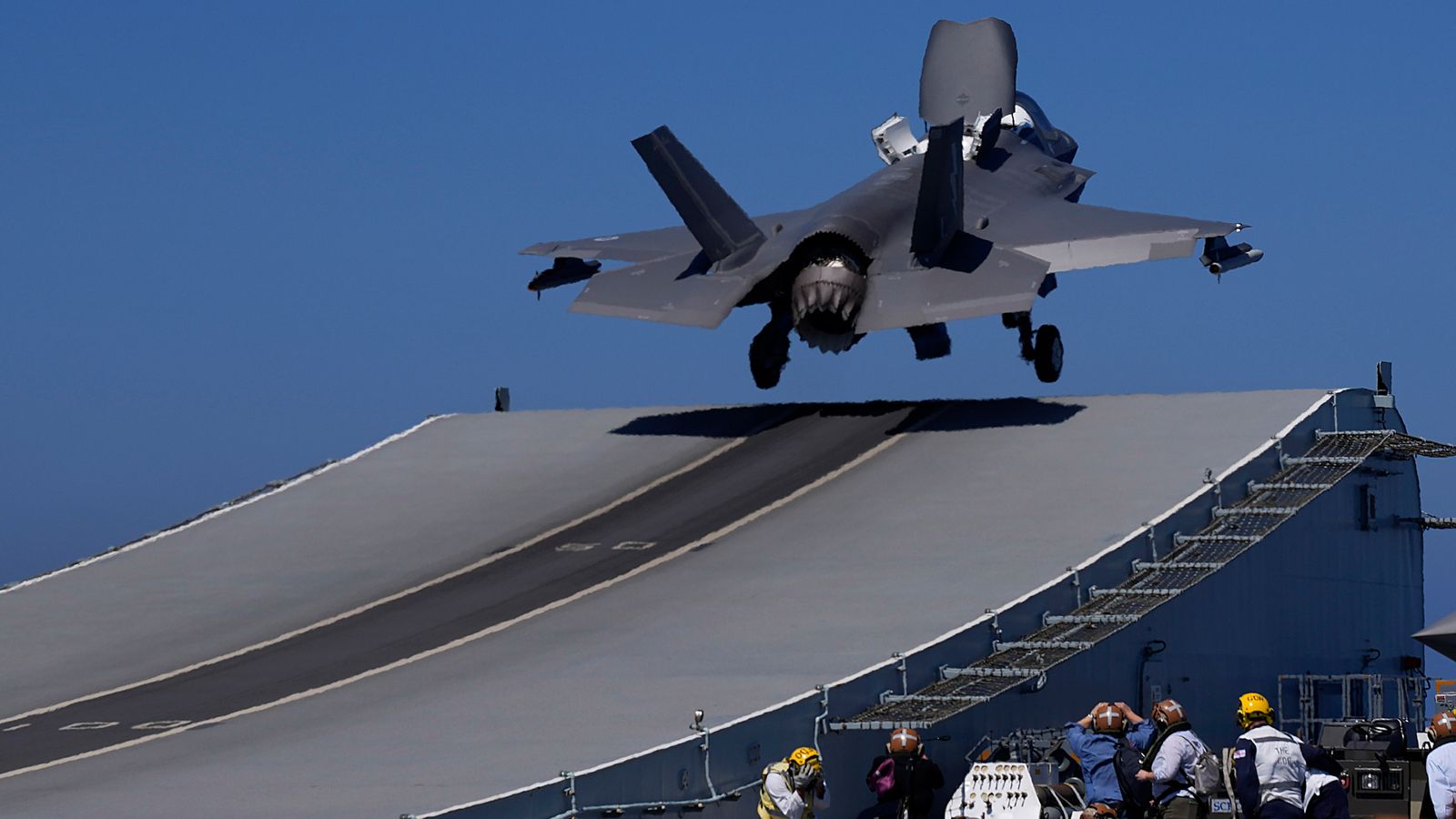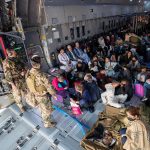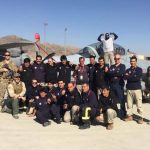The UK’s newest aircraft carrier is proving to be an object of curiosity for Russian military aircraft operating in the increasingly crowded Mediterranean.
HMS Queen Elizabeth is on her first deployment and it is also the first time a UK aircraft carrier is supporting live military operations in more than two decades.
Speaking from the 65,000-ton carrier, Commodore Steve Moorhouse said it was taking on a major share of operations against what is left of Islamic State in Iraq.
But he also said that the eastern Mediterranean had become more contested over the last decade, with the heavier Russian military presence in Syria.
“We’re rubbing up against Russian activity, not in a, you know, in a dangerous or aggressive manner, but you’ve just got other people out here playing in what is a fixed piece of water and airspace.”
Cmdre Moorhouse said that a Russian warship has come within 16 miles of the Queen Elizabeth since it started anti-IS operations on 18 June.
“The eastern Mediterranean used to be much, much quieter, I think,” he said.
“It certainly was when I was a young officer, but there are many more actors playing here now, both at sea, on the surface and in the air.
“And with an increased Russian footprint in Syria, we’re starting to see that.
“So they have air activity and ship activity in the region and so it’s absolutely expected that we will come across one another.”
He insisted there was respect between the pilots of the different countries and that their conduct had been “professional”, with nothing untoward.
“But there is a reality when you buy yourself a fifth-generation aircraft carrier and you take it around the world… people are interested in it,” he added.
The aircraft carrier has eight British F-35 jets which are being used in Iraq for tasks including troop support and surveillance.
Captain James Blackmore, who commands the jets, said UK and Russian pilots have come within “visual distance” of each other.
“It’s that cat-and-mouse posturing, it’s what we expect in this region of world. And as you can imagine, it’s the first time for F-35s into the eastern Mediterranean,” he said.
“So, of course Russia wants to look at what they’re like, they want to look at what our carriers are like.”
There are also 10 helicopters on board and 10 US F-35 jets from the Marine Corps’ Fighter Attack Squadron 211 which carry out operations under British command.
The Queen Elizabeth and its support ships, including US destroyer The Sullivans, will stay in the Mediterranean for two or three weeks before heading through the Suez Canal towards India, South Korea, and Japan.






















